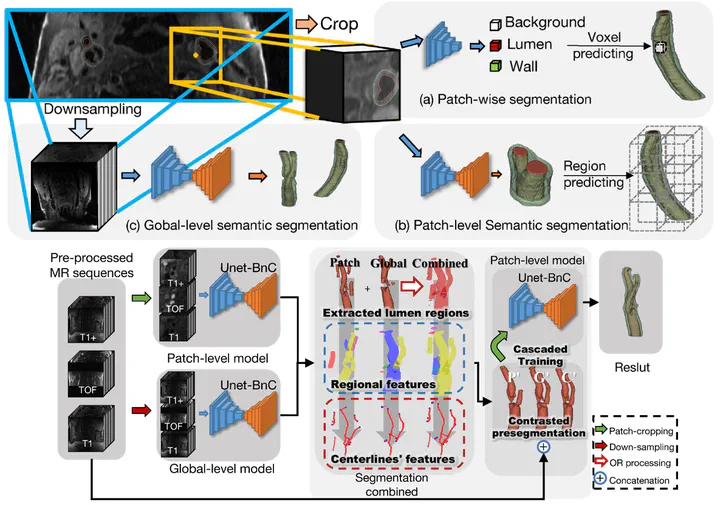Cascaded residual U-net for fully automatic segmentation of 3D carotid artery in high-resolution multi-contrast MR images
Feb 11, 2021·,,,,,·
0 min read
Chenglu Zhu
Xiaoyan Wang
Zhongzhao Teng
Shengyong Chen
Lizhao Mao
Cong Bai
 Image credit: [Cascaded_Carotid_Seg]
Image credit: [Cascaded_Carotid_Seg]Abstract
Accurate and automatic carotid artery segmentation for magnetic resonance (MR) images is eagerly expected, which can greatly assist a comprehensive study of atherosclerosis and accelerate the translation. Although many efforts have been made, identification of the inner lumen and outer wall in diseased vessels is still a challenging task due to complex vascular deformation, blurred wall boundary, and confusing componential expression. In this paper, we introduce a novel fully automatic 3D framework for simultaneously segmenting the carotid artery from high-resolution multi-contrast MR sequences based on deep learning. First, an optimal channel fitting structure is designed for identity mapping, and a novel 3D residual U-net is used as a basic network. Second, high-resolution MR images are trained using both patch-level and global-level strategies, and the two pre-segmentation results are optimized based on structural characteristics. Third, the optimized pre-segmentation results are cascaded with the patch-cropped MR volume data and trained to segment the carotid lumen and wall. Extensive experiments demonstrate the proposed method outperforms the state-of-the-art 3D Unet-based segmentation models.
Type
Publication
Physics in Medicine & Biology, 66(4)